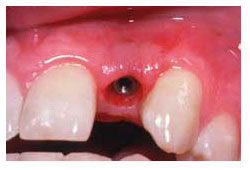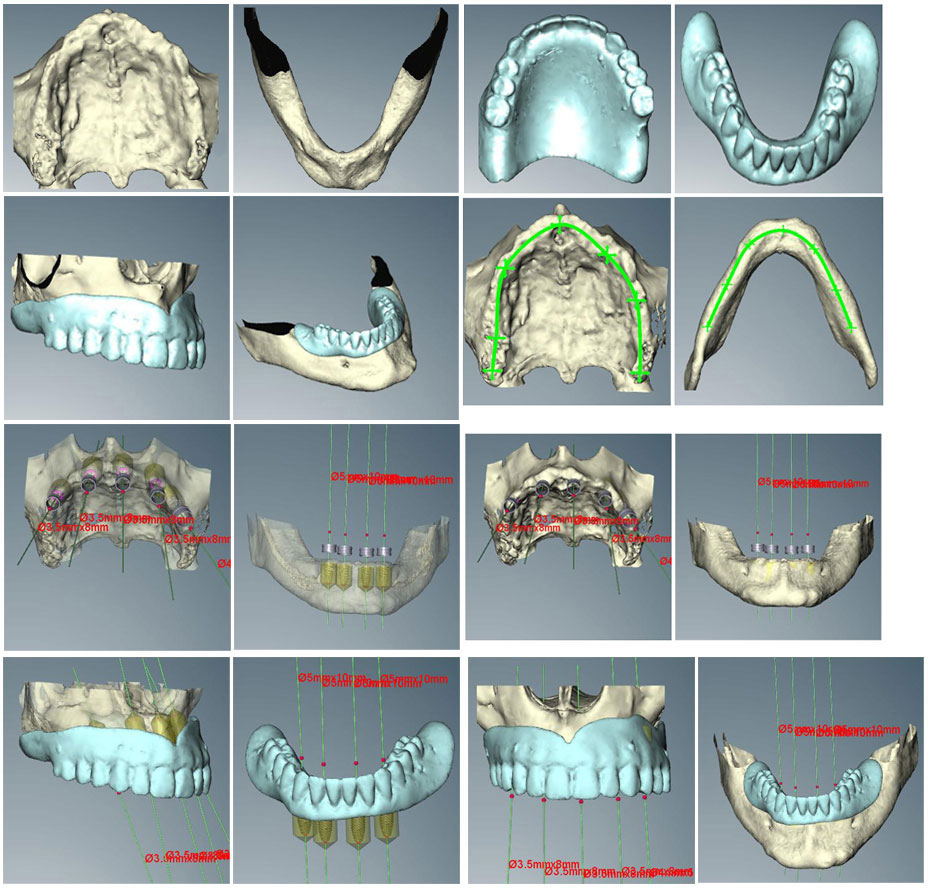A dental implant is a metal device designed to replace missing teeth.The device is usually made out of titanium and surgically placed into the jawbone where the tooth is missing. Unlike a dental bridge, an implant is permanent.
Dental implants are an ideal option for people in good general oral health who have lost a tooth or teeth due to periodontal disease, dental caries, an injury, or some other reason. Dental implants not just look natural but make forget you ever lost a tooth. Your confidence returns with your smile. Under proper conditions, such as placement and diligent patient maintenance, implants can last a lifetime.
Benefits of Dental Implants
Replace one, multiple teeth, or all teeth. Helps anchor traditional dentures.
Biting pressure close to normal healthy natural teeth.
Support a bridge and eliminate the need for a removable partial denture.
Provide support for a denture, making it more secure and comfortable.
Stoma offers implant placement with optimum sterility and patient care.
Requisites for Dental Implants
Good general and oral health
Adequate bone in jaw to support the implant and healthy gum tissues that are free of periodontal disease. The dentist will get a dental/radiographic examination and health history. During these consultation visits we will address your specific needs and considerations. Your questions and concerns are important to us so go ahead and ask. Our team will work with you to help make your surgical procedure a success.
For most patients, the placement of dental implants involves two surgical procedures. First, implants are placed within your jawbone. For the first three to six months following surgery, the implants are beneath the surface of the gums gradually bonding with the jawbone. You should be able to wear temporary dentures and eat a soft diet during this time. At the same time, our office designs the final bridgework or denture, which will ultimately improve both function and aesthetics.
After the implant has bonded to the jawbone, the second phase begins. The oral surgeon or periodontist will uncover the implants and attach a small healing collar. An impression must be taken. Following this, posts or attachments can be connected to the implants. The teeth replacements are then made over the posts or attachments. The entire procedure usually takes six to eight months. Most patients do not experience any disruption in their daily life. After a short time, you will experience restored confidence in your smile and your ability to chew and speak.
Replacing All Teeth
If you are missing all of your teeth, an implant-supported full bridge or full denture can replace them. Dental implants will replace both your lost natural teeth and some of the roots. Dental implants provide several advantages over other teeth replacement options. In addition to looking and functioning like natural teeth, implant- supported full bridges or dentures are designed to be long lasting, comfortable and stable than conventional dentures.
Bone Grafting - Minor and Major Bone Grafting
Over a period of time, the jawbone associated with missing teeth atrophies or is reabsorbed. This often leaves a condition in which there is poor quality and quantity of bone suitable for placement of dental implants. In these situations, most patients are not candidates for placement of dental implants.
Today, we have the ability to grow bone where needed. This not only gives us the opportunity to place implants of proper length and width, it also gives us a chance to restore functionality and esthetic appearance.
Sinus Graft
A sinus graft makes it possible for many patients to have dental implants. The sinus graft makes it possible for many patients to have dental implants when years ago there was no other option other than wearing loose dentures.
Ridge Augmentation
A key to dental implant success is the amount and quality of the bone where the implant is to be placed. Ridge deformities of the upper and lower jaw can leave you with inadequate bone and tissue thickness for either an esthetic and functional bridge or dental implant restoration. Ridge augmentation procedures increase your chance for long-term successful dental implants, both esthetically and functionally.
Graftless(Zygoma) Dental Implants
This revolutionary dental implant system eliminates the need for bone grafting altogether. The Zygoma System is a graftless dental implant system where the implant is directly embedded in your cheekbones (medically referred to as Zygoma). Your total treatment time could be as low as a week or two and likewise your healing would be much faster. As per case requirement we use this system in our clinic.
Fixed Hybrid Bridge
A fixed hybrid bridge is an implant retained bridge that can permanently replace all of the upper or lower teeth. Some patients have lost all their teeth and choose to have them permanently replaced. Other patients have teeth, but suffer from periodontitis and/or dental decay. Instead of choosing extensive treatment to keep them, they opt for tooth removal and replacement with a fixed hybrid bridge.
Ridge Preservation
This is a technique used to restore the lost bone dimension when the jaw ridge gets too thin to place conventional implants. In this procedure, the bony ridge of the jaw is literally expanded by mechanical means.
Guided Bone Generation
Over a period of time, the jawbone associated with missing teeth atrophies or is reabsorbed. Traumatic extractions, periodontal disease or injuries can also damage the implant site. This often leaves a condition in which there is poor quality and quantity of bone suitable for placement of dental implants. Today, we have the ability to grow bone where needed. This is called guided bone regeneration or guided tissue regeneration.
CT Guided Implant Planning
CT Guided Implant Planning is a revolutionary treatment planning and surgical implementation system, enabling us to transfer extra oral planning into the mouth with unrivalled accuracy and ease.
The implant guide software enables us to carry out the entire treatment planning extraorally using a Virtual 3D model of the patient jaws and transferring this into a surgical template there by making the entire process of implant placement, fast and minimally invasive ( flapsless).
Since the final position of the implant is known prior to the actual surgery, the restoration to be given on the implant can be planned in advance.
What Can I Expect After Treatment?
Conscientious at-home oral care is needed to keep your implant clean and plaque- free, brushing and flossing and regular dental visits.


